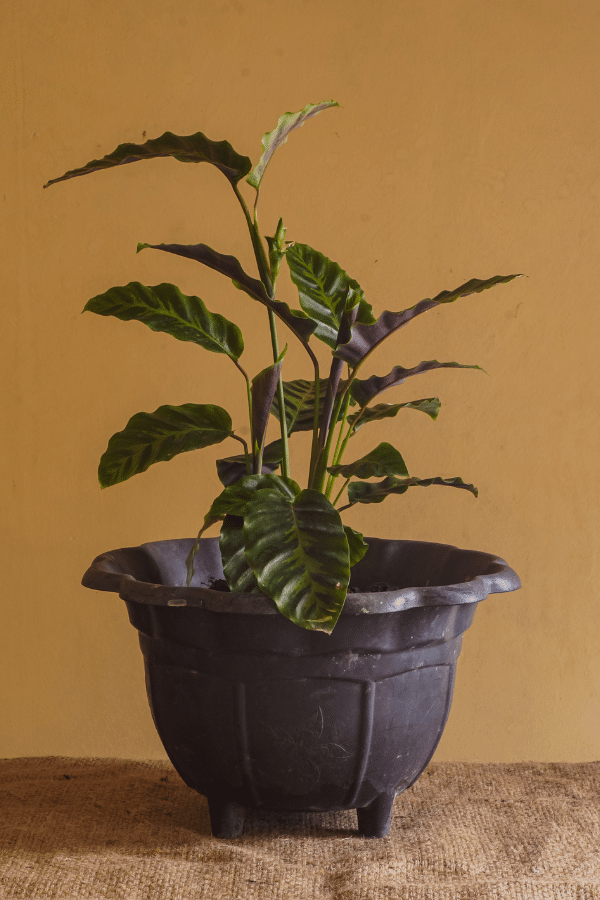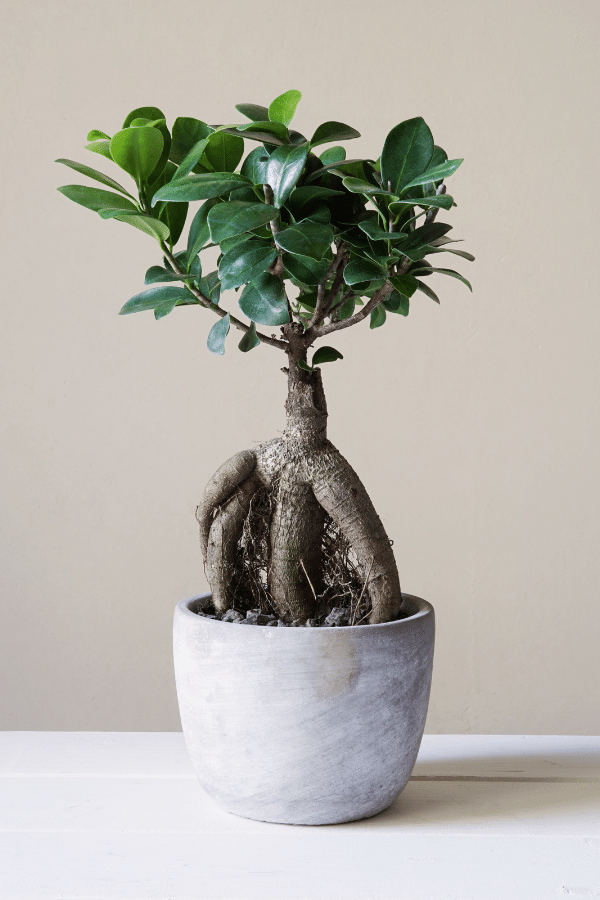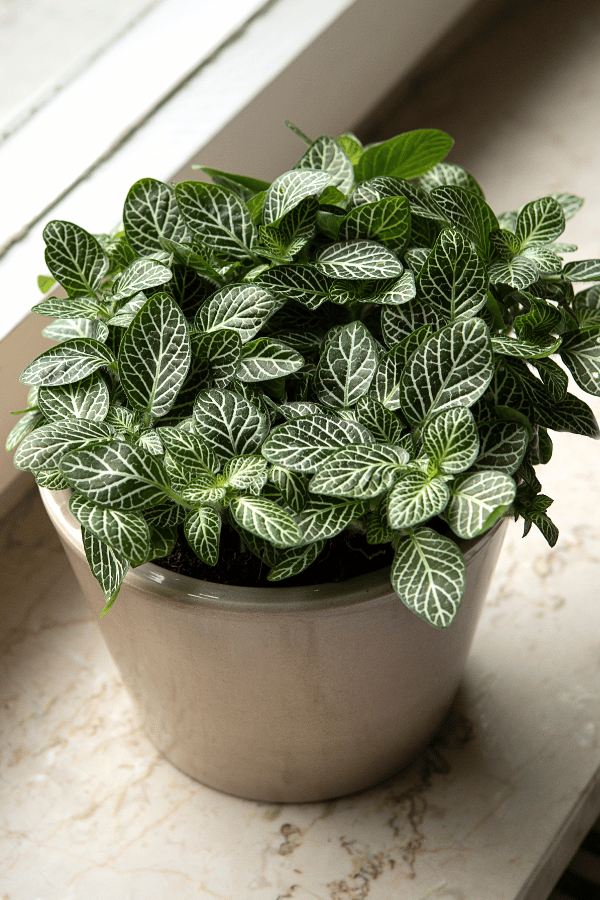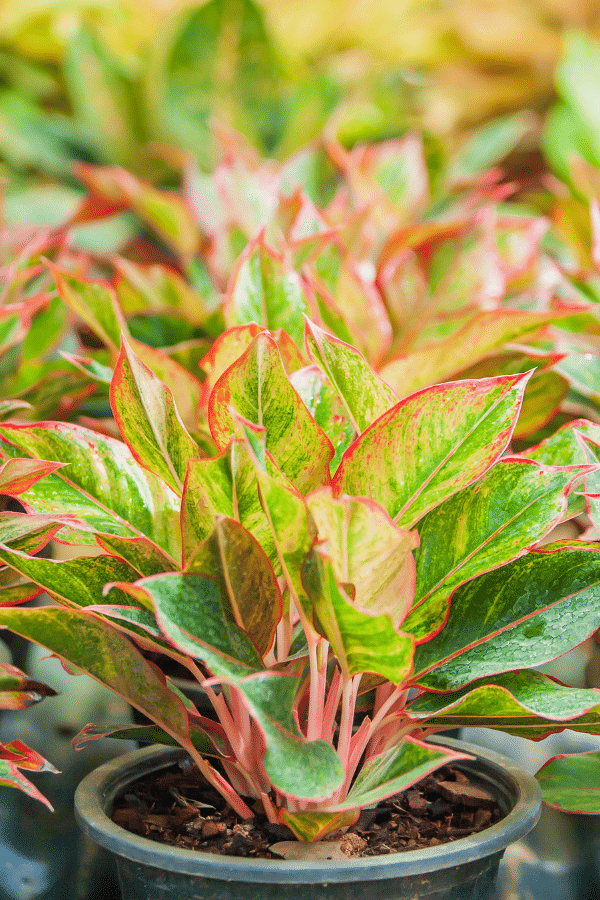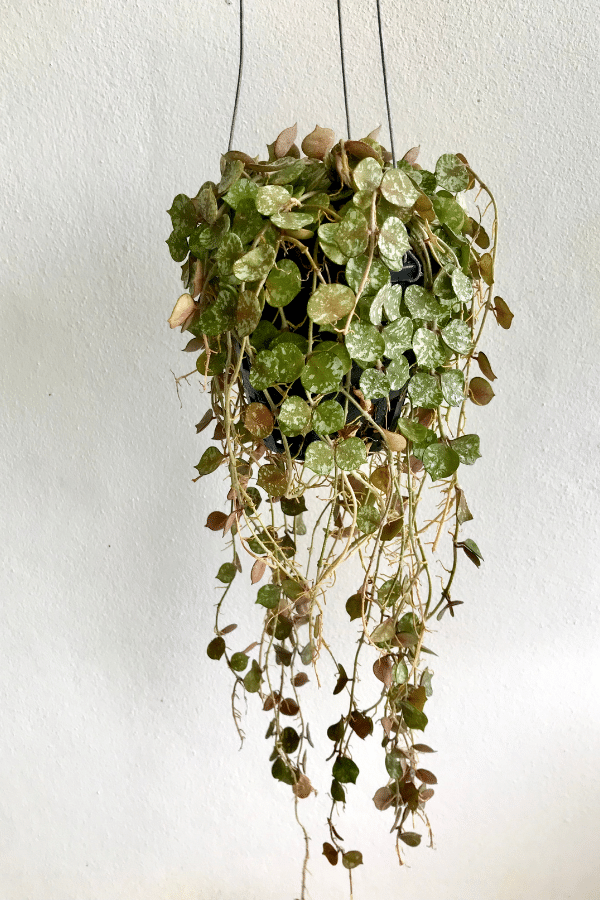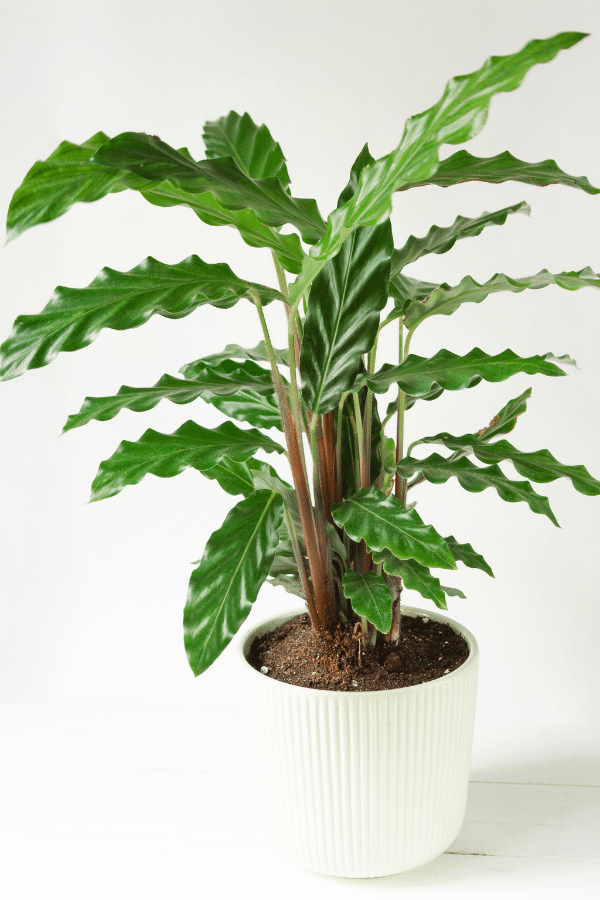Gold Dust Croton
Scientific Name: Codiaeum Variegatum
Common Name: Gold Dust Croton
Codiaeum Variegatum has beautiful yellow to gold dusted foliage, hence the name Gold Dust Croton. Gold Dust Croton care is imperative to have the plant thrive outside of its native environment. In order to get the care right, mimicking the subtropical environment in your home is going to be key to a thriving and healthy houseplant.
Quick Care Overview
| Common Name | Gold Dust Croton |
| Scientific Name | Codiaeum Variegatum |
| Family | Euphorbiaceae |
| Origin | Southern Asia |
| Growth Rate | Medium |
| Identification | Green foliage with yellow to golden speckles |
| Height | Up to 2 feet tall |
| Soil | Well-draining, slightly acidic soil |
| Water | Water only after top inch of soil has dried |
| Temperature | 60-85F |
| Sunlight | Bright indirect 4-6 hours of sunlight |
| Toxic to Cats & Dogs | Yes |
| Toxic to Humans | Yes |
| Pests | Mealybugs, scale, spider mites |
| Diseases | Root rot |
Below we will dive deep into how to care for Gold Dust Croton.
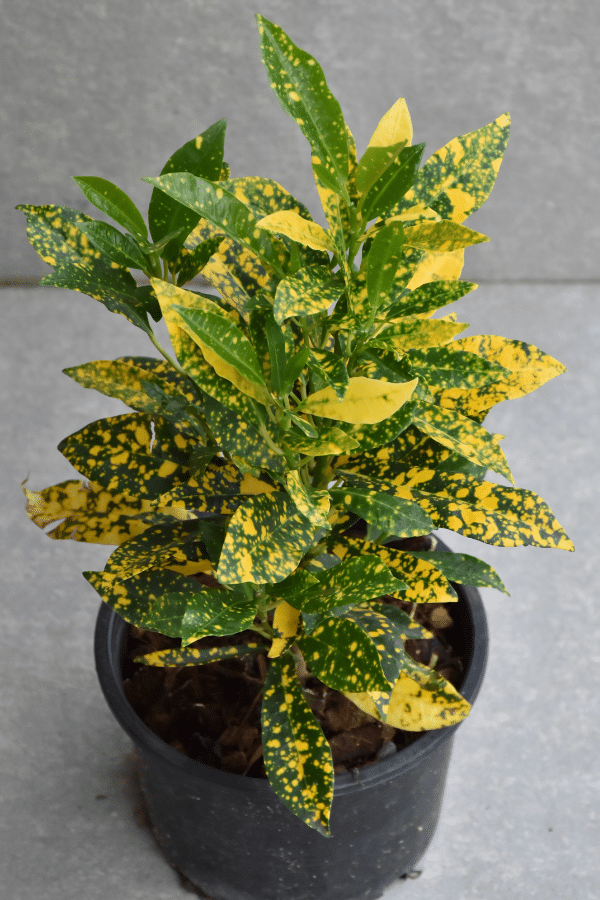
Gold Dust Croton History
Southern Asia native Codiaeum Variegatum, commonly known as ‘Gold Dust’ Croton is a gorgeous evergreen subtropical shrub with striking speckled foliage and air purifying qualities. Having a reputation of being high maintenance, these lovely houseplants are well worth the extra effort.
Gold Dust Croton Identification
These shrubs are grown for their decorative leaves with vibrant green foliage with deep yellow to golden speckles.
Gold Dust Croton Growth Facts
Being a moderate grower and slightly finicky, when grown indoors under cultivation these plants can really shine and add brightness to the room.
How Big Does a Gold Dust Croton Get?
When grown as a cultivated plant, these shrubs often only grow about two feet tall. However, they may reach heights of up to ten feet in their natural habitats.
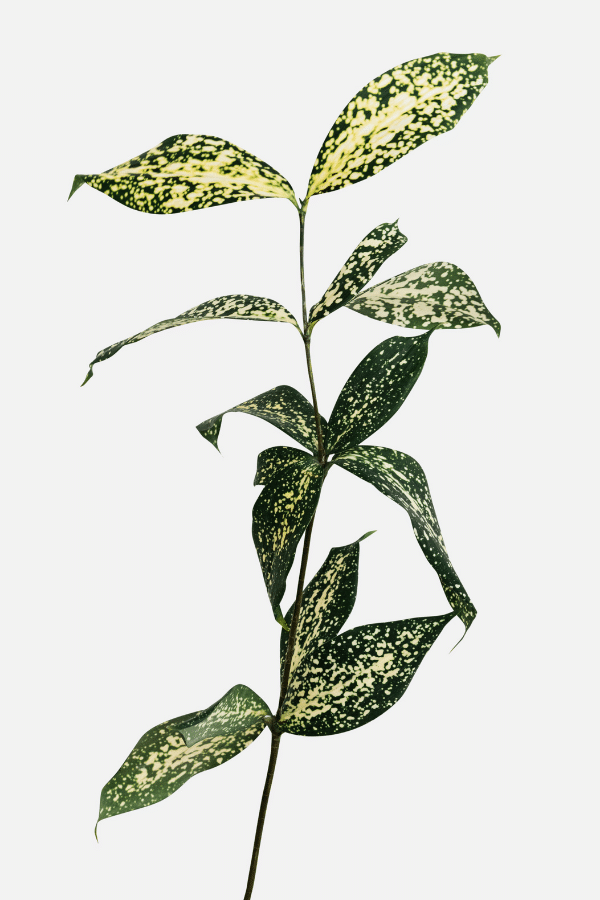
Gold Dust Croton Care
Crotons thrive in sun and require a minimum of four hours of indirect sunlight daily. If you give the Gold Dust Croton proper care, you will be rewarded with gorgeous bright foliage that makes any room pop with gorgeous splashes of gold.
Searching for a new houseplant?
Take our houseplant quiz to see what your next plant should be based on the room it’s in, the specific lighting the room receives, if you want it on the floor or on the table, and much more!
Gold Dust Croton Soil
Gold Dust Crotons prefer slightly acidic, well-draining soil. A standard potting mix with gravel additions will perfectly suit this subtropical shrub.
Gold Dust Croton Fertilizer
This shrub will enjoy feeding during the warm growing spring and summer season about bi-monthly. Utilize a fertilizer designated for houseplants and follow all label instructions. Do not fertilizer in fall or winter.
Gold Dust Croton Watering
The Gold Dust Croton should be watered after the top inch of soil has dried. They like to remain moist but not overly saturated with water. Once the soil is dry, water again immediately. Do not allow this plant to sit in excess water. Dropping leaves may be indicative of underwatering.
Gold Dust Croton Light Requirements
Codiaeum Variegatum requires bright, indirect light for four to six hours a day, at a minimum. Ensure not to allow too much direct sunlight to hit its foliage, which may burn the leaves. On the other hand, keep in mind that not enough light will result in faded, dull foliage. As a rule of thumb, the brighter the light, the more intense the variegation of the foliage will appear, as long as it is not allowed to burn from too intense of heat.
Gold Dust Croton Temperature & Humidity
The ideal temperature for Codiaeum Variegatum, being a subtropical shrub, is between 60 to 85F. Avoid allowing this plant to reach temperatures below 50F, which may cause significant damage to the plant. Keep your plant away from heaters, air conditioners, and any drafts from windows. These plants enjoy an average humidity of 40 to 60%. A pebble tray or humidifier may be used to increase humidity levels. These Crotons also appreciate leaf misting.
Repotting Gold Dust Croton
Repotting of the Gold Dust Croton should be done annually in spring. Select a container with ample drainage holes one to two inches larger in diameter than the previous pot. To repot, simply remove the crotons root ball and place it in a new container. Surround with fresh potting soil and tamp lightly. Water thoroughly and place in indirect light. Do not use an oversized container.
Gold Dust Croton Maintenance & Pruning
This shrub is considered low-maintenance and does not require much pruning. Any pruning should be done in spring and summer. Avoid trimming and pruning too much of the plant at once to avoid shock. As a general rule of thumb, only trim back 1/4 of the plant at a time. Wait for two to three months before trimming again. Discolored leaves may be trimmed at any time. Utilize sterilized shears for pruning and trimming.
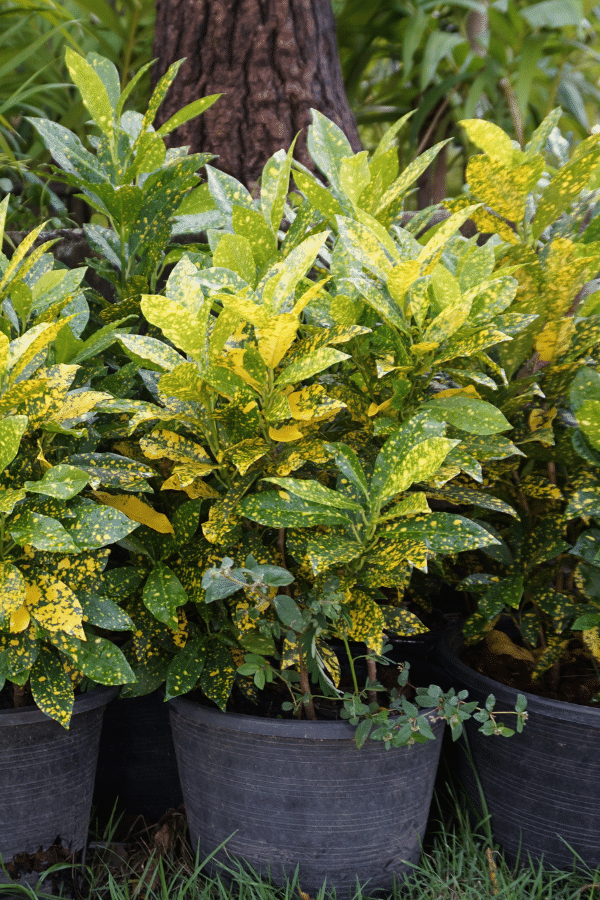
Gold Dust Croton Propagation
Propagation of Codiaeum Variegatum is easily done by stem cuttings. Using a sharp, sterilized blade, cut a stem that is several inches long and contains a few leaves. Place the cutting in well-draining soil. Keep moist and place in indirect light.
Gold Dust Croton Toxicity
Gold Dust Croton is a toxic indoor plant. Keep away from children and pets to avoid ingestion of the plant. Wear gloves when handling this plant and wash hands after.
Toxicity to Humans
Codiaeum Variegatum is considered toxic to humans and should not be ingested. Consumption may cause digestive upset and a range of other medical issues.
Toxicity to Cats & Dogs
Codiaeum Variegatum is considered toxic to animals, and care should be taken to avoid ingestion. If you suspect your pet has consumed any portion of this plant, contact your veterinarian immediately or animal poison control.
Gold Dust Croton Problems
Gold Dust Croton Leaves Turning Yellow
Leaves that are lacking variegation and fading in color or yellowing is often due to improper light exposure. These Crotons require a minimum of four to six hours of bright, indirect sunlight daily to keep their gold dusted leaf color.
Gold Dust Croton Leaves Turning Brown
Brown tips on leaves or on leaf edges on Gold Dust Croton is often indicative of a lack of humidity. These Crotons love to be misted, placed on a pebble tray, or next to a humidifier. Underwatering may also cause browning of leaves, or the leaves to drop entirely. Be sure to give this plant the humidity it needs to keep its leaves vibrant.
Gold Dust Croton Diseases
The most common disease affecting the Gold Dust Croton is root rot. Ensure that your container has proper drainage and that you do not overwater. If your Gold Dust Croton begins to wilt, it is often indicative of overwatering. Let this plants soil dry out a bit between waterings and use a well-draining soil.
Gold Dust Croton Pests
Like many houseplants, the Gold Dust Croton may fall susceptible to infestation by a range of pests, including mealybugs, scale, or spider mites. Upon identification of infestation, isolate your plant, and treat it with a pesticide, such as a neem oil or insecticidal soap.
OTHER RESOURCES You May Like:
FAQ
Why Is My Gold Dust Croton Dropping Leaves?
Not enough humidity or water will cause the Gold Dust Croton leaves to drop. Provide the plant with adequate humidity and water.
Does Gold Dust Croton Need Direct Sunlight?
Gold Dust Croton requires bright indirect sunlight. Direct sunlight will burn the leaves and will cause the leaves will lose its color.
Is Gold Dust Croton an Indoor Plant?
Coming from Southern Asia, the Gold Dust Croton is often used as an indoor plant. Mimicing its natural environment will help this plant to grow healthy.

